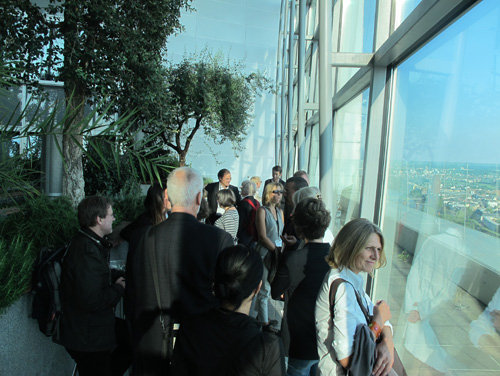conference programme
Frankfurt / Rhine-Ruhr Metropole 2012
Saturday, September 1, 2012
FRANKFURT
DAM Deutsches Architekturmuseum
Schaumainkai 43
13:00 – 17:00
registration / market place
13:00 – 18:00
“The Architectural Model – Tool, Fetish, Small Utopia”
Visit of the architecture model exhibition at the DAM, free entry
Sunday, September 2, 2012
FRANKFURT DAM
10:00 – 12:00
board meeting
12:00 – 19:00
registration / market place
“The Architectural Model – Tool, Fetish, Small Utopia”
Visit of the architecture model exhibition at the DAM, free entry
14:00 – 18:00
tour 1_ Das Neue Frankfurt, 1925-1930
A guided tour by bus to the settlements of the “Neues Frankfurt”, the ambitious housing project of the city, which was built between 1925 and 1930 under the supervision of Ernst May.
14:00
Departure by bus from the DAM
14:20 – 18:00
Praunheim & Römerstadt, Ernst May House, 1926-28, by Ernst May et al.
Grossmarkthalle & new ECB premises, 1928, by Martin Elsaesser / 2010-14, by Coop Himmelb(l)au
19:30
conference opening and reception at Römer Kaisersaal
The official reception to mark the opening of 16 will be held at the Kaisersaal of the Römer. This building has served as the Frankfurt City Hall for over 600 years, it was for a long time the place where the German Kaiser was elected, and as such is the place with the richest history in the city.
Monday, September 3, 2012
FRANKFURT DAM
08:00 – 19:00
registration / market place
08:30 – 09:30
opening lecture
Layla Dawson: Contemporary Architecture in Germany
09:45 – 11:45
session 1_conserving models
The session aims at dialog between curators, conservators and historians. Collections of modern architecture models are faced with a whole set of new conservation issues. They present material challenges akin to those of modern sculpture. The session seeks to focus specifically on issues of model conservation seen from any combination of historical, material, and philosophical points of view.
Chairs: Barry Bergdoll, Corinne Bélier
12:00 – 13:00
“The Architectural Model – Tool, Fetish, Small Utopia”
Guided tour of the architecture model exhibition at DAM
13:00 – 14:00
Lunch
14:00 – 15:00
short lectures (Pecha Kucha format)
Various architectural collections in Germany
15:30 – 17:30
tour 2_ museumsufer
Guided tour by foot to the surrounding district of the DAM along the river Main to the museums in the neighbourhood (Städel, addition Schneider+Schumacher, 2008-12 / Museum für Angewandte Kunst, Richard Meier, 1982-85 / etc.), to the St. Bonifatius church, and to the archives of the DAM.
Free evening
Tuesday, September 4, 2012
I.G.-Farben Building, Campus Westend and Commerzbank Tower
Transfers by subway
Campus Westend
Grüneburgplatz 1
09:00 – 10:00
tour 3_ I.G.-Farben Building and Campus Westend
Guided tour by foot of the former I.G.-Farben Headquarters (by Hans Poelzig 1928-1931) and the new university campus. After 1945 Poelzig’s buildings served as the headquarters of the US Army V. Corps. Following the departure of the Americans in the 1990s the university took over the historical site. A first construction stage between 2001 and 2008 saw the emergence of the Campus Westend with several new buildings (by Ferdinand Heide, Kleihues + Kleihues et al.).
10:30 – 12:30
session 2_ reconstruction
The session questions the framework laid down in the 1964 Venice Charter for dealing with historical building fabric, which to large extent made reconstruction a taboo, calling for a distinct difference between old and new. The session also aims to reflect on Modernist ideas as reflected in the interpretation and significance of reconstruction in other cultures.
Chair: Winfried Nerdinger
12:30 – 13:30
Lunch
Transfer by subway to the CBD of Frankfurt
Commerzbank Tower
Kaiserplatz
Session and reception in the high-rise (1994-1997, by Norman Foster and Partners), visit of the winter gardens.
14:30 – 16:30
session 3_ strategies (roundtable discussion)
Today, global ecological and financial crises, in addition to increasingly digital environments, create the necessity to rethink the architecture museum as an institution. The session will center on understanding these new conditions and reflect on the current cultural position and the strategies needed for the architecture museum to maintain an effective critical role.
Chairs: Dietmar Steiner, Mirko Zardini
17:00 – 18:00
Farewell Frankfurt, reception high above the city
Free evening
Wednesday, September 5, 2012
NORTH RHINE-WESTPHALIA (NRW)
M:AI Museum für Architektur und Ingenieurkunst NRW
Cologne and Museumsinsel Hombroich
Transfer to Cologne by train ICE arriving at 09:15
09:30 – 12:30
tour 4_ Cologne
Guided Tour by bus to House Ungers, UAA, Cologne and to the interim location of the collapsed Historical City Archive of Cologne
12:30 – 13:30
Lunch at the Triangle Tower
Bus transfer to the “Museumsinsel Hombroich” and the nearby former NATO missile base. Exhibition buildings, large sculptures and studios were arranged into the spacious landscape, buildings by Tadao Ando, Raimund Abraham, Erwin Heerich and Àlvaro Siza.
15:00 – 17:00
tour 5_ Hombroich
Guided tour around the island and the former missile base.
session 4_ archives in transition
Archival collections in museums and other collecting repositories are being rediscovered by their home institutions as the major assets that they are – large-scale scholarly resources, potential sources of revenue, political tools. They are also indisputably liabilities: the cost of processing, storing, and making these assets available in both physical and digital form leads some institutions to re-think the entire endeavor of collecting at a moment when archives themselves are plentiful but resources are scarce.
Chair: Irena Murray
18:30 – 20:30
“Dinner on an island”
21:30
By bus to the Hotels in Essen (arrival time 21:30)
Thursday, September 6, 2012
Essen and Gelsenkirchen
08:15
Meeting point Essen City
By bus to the MiR Musiktheater im Revier, Gelsenkirchen
The 1959 opened Building based on plans by Werner Ruhnau. “An open society needs open theatre play forms“, says the architect. Ruhnau has realised the theatre in a creative dialogue between architecture, art and technology. Different disciplines opening themselves towards another, their interplay Ruhnau kept initialising over and over again, that’s how this holistic artwork has evolved, an artwork many artists like Yves Klein, Jean Tinguely and Norbert Kricke have participated in at the end of the 1950s.
09:30 – 10:30
Guided tour with the architect Werner Ruhnau
10:30 – 12:30
MiR Small House
session 5_ Is there anybody out there? (Audience & Education)
What do curators and designers of architecture exhibitions actually know about their audience? What do they look like today, the visitors of architectural museums and exhibitions? The session deals with these questions. Especially the user’s perspective shall be focused on. The presentation of new didactic activities will also be part of the session.
Chair: Rebecca Bailey
By bus to world heritage site Zollverein, Essen
Zollverein was once considered the most up-to-date and most beautiful coal mine of worldwide. Its architecture once set trends towards purpose-orientated industrial buildings. After being closed down in 1986, Zollverein became a symbol for the structural change of the Ruhr region. Rem Koolhaas, Foster & Partners, SANAA architects and agence-ter where involved in the development of the project Zollverein.
13:00
reception on the cooking plant Zollverein
14:30 – 16:30
general assembly at the coal washery, Zollverein XII
Time for guided tours
alternative I
Zollverein area with architecture of Sanaa office, Norman Foster, Rem Koolhaas, agence-ter
alternative II
Transfer to Folkwang Museum, David Chipperfield
Back to the hotels
19:30
Meeting point Essen City
Transfer to Coalmine Oberschuir, Gelsenkirchen
The building gets erected as “shaft 8” of the Gelsenkirchen coal mine “Consolidation” for man-riding and ventilation until it was closed 1981
20:30 – open end
dinner at a coal mine
Bus shuttles to the hotels
Beginning at 22:00
Friday, September 7, 2012
Essen – Berlin
Transfer to the main railway station, Essen
By train to the post-conference tour, Berlin
Shuttles to the Airport Düsseldorf



